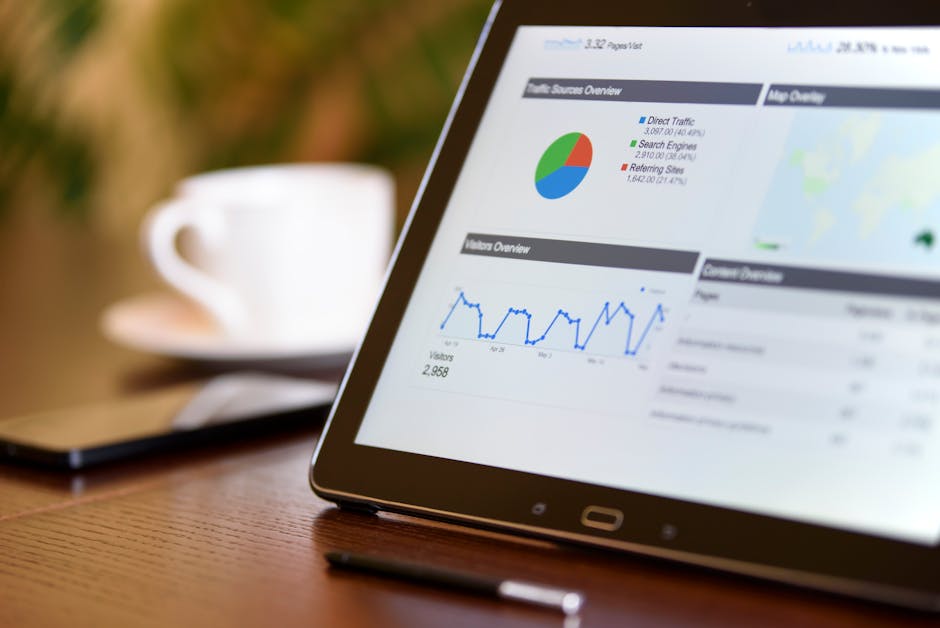Why Every New Business Needs a Budget
Business budgeting for beginners is the process of creating a financial roadmap that helps you track income, control expenses, and plan for growth. If you’re just starting out, here’s what you need to know:
Quick Answer: Business Budgeting for Beginners
- Define your goals – What do you want your budget to help you achieve?
- Track revenue sources – List all income streams and estimate monthly amounts
- List fixed expenses – Rent, salaries, insurance that stay constant
- Calculate variable costs – Materials, commissions, utilities that fluctuate
- Create a contingency fund – Set aside 5-10% for unexpected expenses
- Monitor and adjust – Review monthly and update quarterly
Creating and sticking to a budget is essential for any successful business. According to research, money problems and poor accounting are two primary reasons why many small businesses don’t survive their first five years. In fact, less than half of small businesses opened between 1994 and 2020 survived past the five-year mark.
A well-structured budget acts like the windshield of your business car – it shows you what’s coming and helps you steer around obstacles. Without it, you’re essentially driving blindfolded.
Today’s economic landscape makes budgeting even more critical. Recent surveys show that 73% of small business owners are concerned about inflation, while 61% worry about rising commodities prices. A solid budget helps you plan for these challenges.
Whether you’re launching a startup or running a small business, your budget doesn’t need to be complicated. It simply needs to be accurate, flexible, and reviewed regularly. Think of it as a living document that evolves as your business grows.
In this guide, we’ll walk you through creating a business budget that works, even if numbers aren’t your strong suit. The goal isn’t to restrict your spending but to empower smarter decisions about where your money goes.

What You’ll Learn
By the end of this guide, you’ll understand:
- The critical benefits of business budgeting (and why it’s worth your time)
- Different types of budgets and when to use each one
- Our simple 7-step process to create your first business budget
- Essential tools and templates to make budgeting easier
- Common budgeting mistakes and how to avoid them
Let’s turn what might seem like a daunting task into a straightforward process that will set your business up for financial success.
Business Budgeting for Beginners: Why It Matters
Ever felt like you’re constantly putting out financial fires in your business? You’re not alone. Many entrepreneurs wonder if creating a budget is really worth precious time when there are a thousand other tasks demanding attention. The answer is a resounding yes—and the reasons might surprise you.
Control Your Costs
Let’s be honest—money has a sneaky way of disappearing when you’re not watching it. A budget shines a spotlight on exactly where your dollars are going. I recently spoke with a bakery owner who finded she was spending nearly $300 monthly on specialty ingredients that often expired unused. Her words? “My budget became my financial conscience, asking me ‘do you really need that?’ before every purchase.”
Manage Your Cash Flow
Here’s a sobering truth: businesses with healthy profits can still fail if they run out of cash. Your budget serves as an early warning system, helping you spot potential cash crunches before they become crises. This is particularly vital if your business experiences seasonal ups and downs—like that landscaping company that earns 70% of revenue in just five months but needs to cover expenses year-round.
Make Better Decisions
When opportunity knocks (or problems arise), your budget becomes your decision-making compass. Should you invest in that new software? Can you afford to hire help? Instead of guessing or going with your gut, your budget provides clear boundaries for what’s financially possible right now.
Plan for Growth
Dreams without plans remain just that—dreams. Business budgeting for beginners includes mapping out how you’ll fund tomorrow’s opportunities. Whether it’s expanding to a second location, developing a new product line, or finally upgrading that ancient equipment, your budget transforms wishful thinking into actionable growth plans.
Prepare for Emergencies
If the pandemic taught business owners anything, it’s that the unexpected isn’t just possible—it’s inevitable. A well-structured budget carves out space for your “just in case” fund. This financial cushion might seem like a luxury when times are good, but becomes absolutely essential when challenges arise.
Reduce Financial Risks
Think of your budget as a financial crystal ball. By forecasting expenses and revenues, you can spot potential storms while the skies are still clear. This proactive approach dramatically increases your staying power in a business landscape where survival is never guaranteed.
The concerns facing small business owners today make budgeting more important than ever. According to the 2024 Bank of America Business Owner Report, entrepreneurs are navigating significant headwinds:
- 73% worry about ongoing inflation
- 61% are concerned about rising commodities prices
- Many struggle with unpredictable supply chains and increasing labor costs
As financial expert Dave Ramsey puts it: “A budget is telling your money where to go instead of wondering where it went.” This shift—from reacting to money problems to proactively directing your finances—can transform not just your business outcomes, but also your peace of mind.
When you create a budget, you’re not just organizing numbers on a spreadsheet. You’re creating a roadmap for your business’s future—one that puts you firmly in the driver’s seat.
Budget Building Blocks: Types, Components & Methods
Let’s face it – budgeting isn’t always the most exciting part of running a business, but understanding the building blocks will make the process much less intimidating. Think of your budget as a recipe – you need to know the ingredients and methods before you can cook up financial success.
Types of Business Budgets
As your business grows, you’ll likely use different types of budgets to keep your finances on track:
Operating Budget: This is your everyday financial companion – tracking regular income and expenses over a 12-month period. It’s like the foundation of a house; everything else builds upon it. Most new entrepreneurs start here, mapping out day-to-day expenses against expected income.
Capital Budget: Planning to buy that shiny new equipment or maybe a company vehicle? Your capital budget handles these big-ticket purchases. It helps you plan when and how to invest in those important assets that will benefit your business for years to come – without draining your everyday cash reserves.
Cash-Flow Budget: Ever heard the saying “profit isn’t cash”? This budget focuses specifically on timing – when money moves in and out of your business. Even profitable businesses can fail if they run out of cash, which is why tracking cash flow is absolutely crucial, especially in seasonal businesses.
Master Budget: Think of this as the “one budget to rule them all.” It combines all your other budgets into a comprehensive financial plan. While smaller businesses might not need this level of complexity initially, it becomes valuable as you grow and add departments or product lines.
Essential Budget Components
No matter which budget type fits your needs, these four components form the backbone of any solid business budget:
Revenue: This is all the money flowing into your business from sales of products or services. Be realistic here – optimism is great for motivation but dangerous for budgeting. Many successful entrepreneurs recommend slightly underestimating revenue to stay on the safe side.
Fixed Costs: These expenses stay consistent month after month, regardless of how busy you are. Rent, insurance, salaries, loan payments – they’re predictable and typically easier to budget for. Knowing these costs helps establish your baseline operating expenses.
Variable Costs: Unlike fixed costs, these fluctuate based on your business activity. Materials, commissions, shipping, and utilities often fall into this category. The more you sell, the higher these costs typically go. Understanding your variable costs is crucial for pricing your products or services profitably.
Contingency Fund: The business equivalent of a rainy-day fund. Setting aside money for unexpected expenses isn’t pessimistic – it’s smart business budgeting for beginners. Even the best-planned businesses face surprises, from equipment breakdowns to sudden opportunities that require quick cash.
Popular Budgeting Methods
Now that you know what goes into your budget, let’s explore how to approach the creation process:
Incremental Budgeting: The simplest approach – take last year’s numbers and adjust them slightly based on expected changes. It’s quick and easy, making it popular among busy small business owners. The downside? You might keep carrying forward inefficiencies or outdated spending patterns.
Zero-Based Budgeting: Every expense must justify its existence each budgeting cycle. Starting from zero forces you to question every dollar spent. While more time-consuming, this method often uncovers unnecessary spending that incremental budgeting might miss. Perfect for cost-cutting initiatives or businesses going through significant changes.
Activity-Based Budgeting: This method connects spending directly to your business activities and goals. First, identify what activities you need to achieve your objectives, then determine the costs associated with each. This creates a clear link between your spending and business strategy.
Participative Budgeting: Bringing multiple team members into the budgeting process can lead to more accurate estimates and greater buy-in. When employees help create the budget, they’re more likely to stick to it. This approach works well as your business grows beyond a one-person operation.

| Method | Pros | Cons | Best For |
|---|---|---|---|
| Incremental | Simple, time-efficient | May continue inefficiencies | Stable businesses with minimal changes |
| Zero-Based | Eliminates waste, aligns with goals | Time-consuming, resource-intensive | Cost-cutting initiatives, changing businesses |
| Activity-Based | Links costs to business activities | Complex to implement | Project-based businesses, strategic growth |
| Participative | Increases accuracy and buy-in | Can be slower, potential conflicts | Larger organizations with multiple departments |
Don’t feel like you need to choose just one method. Many successful entrepreneurs use a hybrid approach – perhaps zero-based budgeting for discretionary expenses while using incremental budgeting for more stable costs. The best method is the one that works for your unique business needs and helps you sleep better at night.
Your budget isn’t set in stone. As you’ll see in our 7-step process coming up next, the most effective business budgeting for beginners involves regular reviews and adjustments as your business evolves.
7-Step Budget Blueprint
Creating your first business budget doesn’t have to be complicated. Let’s walk through our proven 7-step process that works whether you’re a solo entrepreneur or managing a growing small business.
Step 1: Assess Your Current Financial Health
Before mapping your financial future, you need to understand where you stand today. Think of this step as taking a financial snapshot of your business.
Start by gathering your financial records from the past year—income statements, balance sheets, cash flow reports, and bank statements. If you’re diligent with your bookkeeping, this should be straightforward. If not, now’s the perfect time to get organized!
Look for patterns in your numbers. Which months brought in the most revenue? When did you spend the most? Are there seasonal ups and downs in your business? Understanding these patterns helps you predict future performance more accurately.
New business owners without historical data shouldn’t worry. Industry associations and business networks often publish benchmark reports that can give you realistic starting points for businesses similar to yours.
Pro Tip: If spreadsheets make your eyes glaze over, consider investing in simple bookkeeping software. Having accurate financial data is like having a good map—essential for any journey!
Step 2: Set Clear Financial Goals
Your budget should help you achieve specific business dreams. Without clear goals, a budget is just numbers on a page.
Think about what you want to accomplish in the next year. Maybe you’re aiming to boost monthly sales by 15%, cut operating costs by 5%, or save $10,000 for new equipment. Looking further ahead, perhaps you dream of opening a second location or launching an exciting new product line.
Make these goals SMART—Specific, Measurable, Achievable, Relevant, and Time-bound. Instead of “grow my business,” try “increase monthly revenue by 15% by December through expanded digital marketing efforts.”
Your budget becomes powerful when it clearly shows how your spending decisions support these goals. For instance, if launching a new product is your aim, your budget should include specific allocations for development, production setup, and marketing that exciting new offering.
Business Budgeting for Beginners Step 3: Forecast Revenue
Now comes the part many new business owners find challenging—predicting how much money will come in. While no crystal ball exists for perfect forecasting, there are practical approaches to make educated estimates.
If you have past sales data, start there. Review your monthly figures from the previous year and adjust for any factors that might affect future sales—new products, price changes, or market trends. Remember to account for seasonality too. A retail shop might see 30% of yearly sales during the holiday season, while a landscaping business might make 70% of revenue during spring and summer.
For new businesses without sales history, research becomes your best friend. Industry benchmarks can provide realistic starting points. Break down your forecast by product or service type and customer segments to add precision.
Be optimistic but realistic. It’s better to underestimate revenue and be pleasantly surprised than to count on income that never materializes.
Pro Tip: Create three revenue scenarios—conservative, moderate, and optimistic. This builds flexibility into your planning and helps you prepare for different possibilities.
Step 4: List and Confirm Fixed Costs
Fixed costs are the financial foundation of your business—expenses that remain relatively constant regardless of how busy you are. These bills keep coming even during slow periods, so understanding them is crucial.
Common fixed costs include rent, insurance premiums, loan payments, salaried staff, software subscriptions, website hosting, and professional services like accounting or legal help. For expenses billed annually (like insurance), divide by 12 to see their monthly impact.
While reviewing these costs, ask yourself critical questions: Are you getting value from every subscription? Could you negotiate better terms on your lease? Even “fixed” costs sometimes have wiggle room.
Step 5: Estimate Variable & One-Off Costs
Unlike fixed costs, variable expenses fluctuate with your business activity—typically rising when you’re busier and falling during slower periods.
Common variable costs include inventory, shipping, credit card fees, sales commissions, utilities, hourly labor, and marketing. For each one, estimate monthly amounts based on your revenue forecast. If materials typically cost 25% of your product revenue and you’re projecting $10,000 in monthly sales, budget $2,500 for materials.
Don’t forget about one-off expenses that don’t occur every month but need planning: equipment purchases, office renovations, conference attendance, professional development, and annual software licenses. Identify when these will occur and add them to the appropriate months.

Step 6: Create a Contingency & Capital Reserve
Life happens. Equipment breaks, opportunities arise, and market conditions change unexpectedly. A contingency fund acts as your business safety net for these surprises.
A good rule of thumb is setting aside 5-10% of your projected revenue for contingencies. With $20,000 in monthly revenue, aim to reserve $1,000-$2,000 each month for unexpected costs.
Beyond short-term contingencies, work toward building a capital reserve for major expenses like equipment replacements or business expansion. Ideally, build toward having 3-6 months of operating expenses in reserve. This might seem ambitious, but this financial cushion can mean the difference between weathering a storm and closing your doors.
Take time to think through different scenarios: What would you do if revenue dropped by 25%? What if a key employee left? How would you handle a supply chain disruption? Having plans and reserves for these possibilities makes your business more resilient.
Business Budgeting for Beginners Step 7: Finalize, Test & Adjust
Now it’s time to bring everything together into a complete budget that works for your business.
Calculate your projected profit or loss for each month by subtracting all expenses from your forecasted revenue. This gives you a clear picture of your expected financial performance.
Test your budget against different scenarios. What happens if sales are 20% lower than expected? How would an unexpected $5,000 expense affect your cash flow? These “what-if” exercises help you prepare for various possibilities.
Create variance columns in your budget spreadsheet to track the difference between what you budgeted and what actually happens. This makes it easy to spot areas needing attention when you review your performance.
Determine your break-even point—the sales level needed to cover all your costs. This critical number helps you understand how much you need to sell just to keep the lights on.
A budget is a plan, not a prison. It should guide your decisions while remaining flexible enough to adapt to changing circumstances. The most successful business owners view their budgets as living documents that evolve as their businesses grow.
Tools, Monitoring & Continuous Improvement
Creating your budget is just the beginning. To make it truly effective, you’ll need the right tools and a system for regular monitoring and improvement.

Must-Have Budgeting Tools & Templates
The good news? You don’t need to spend a fortune on fancy software to create an effective business budgeting for beginners system. Many entrepreneurs start with simple, accessible options that work just fine.
Spreadsheets are often the perfect starting point. Google Sheets offers free templates specifically designed for business budgeting that you can customize to your needs. Microsoft Excel comes with built-in budget templates that are surprisingly robust. If you’re looking for something a bit more specialized, Smartsheet provides customizable business budget templates, while Vertex42 offers templates custom to different business types.
As your business grows, you might consider accounting software that includes budgeting features. QuickBooks, Xero, FreshBooks, and Wave all integrate budgeting directly with your financial data, making it easier to track actual performance against your plan.
For those facing specific challenges, specialized tools like PlanGuru can help with advanced financial planning, Float excels at cash flow forecasting, and LivePlan combines business planning with budgeting features.
The best tool is the one you’ll actually use consistently. A basic spreadsheet that you maintain regularly provides far more value than sophisticated software that intimidates you into avoidance.
If you’re just launching your business, create a separate startup cost calculator to account for one-time costs like equipment and permits, operating costs until you reach profitability, and personal expenses you need to cover during the startup phase.
Want to save time? Try these simple automation tips: Link cells in your spreadsheet to automatically update totals, set up formulas to calculate variances between budgeted and actual figures, create visual charts to track performance, and use conditional formatting to highlight potential trouble spots at a glance.
Review & Update Schedule
A budget gathering digital dust on your hard drive won’t help your business thrive. The magic happens when you actively use it to guide decisions and track performance.
Think of your monthly check-ins as quick health assessments. Carve out an hour to compare your actual revenue and expenses against your budget. Where are the significant differences, and why? Use what you learn to make immediate corrections if you’re veering off track.
“I was shocked to find we were spending twice our budgeted amount on office supplies,” shared one small business owner. “Our monthly review helped us catch and fix this leak before it became a major problem.”
Quarterly, take a deeper dive. This is your chance to update projections for the coming months based on current trends and assess your progress toward annual goals. Is that marketing initiative delivering the expected return? Should you adjust your inventory strategy based on the first quarter’s sales patterns? These quarterly re-forecasts keep your budget relevant and responsive.
Your annual planning session is where you create a fresh budget for the upcoming fiscal year. Incorporate everything you’ve learned, align with updated business goals, and—if you have a team—involve key members in the process. Their input often provides valuable perspective and increases buy-in.
Speaking of teams, participative reviews can significantly improve budget effectiveness. Share relevant portions with department heads, hold them accountable for their areas, and encourage suggestions for improvement. Don’t forget to celebrate when budget goals are met—recognition reinforces the importance of financial discipline.

Frequently Asked Questions about Business Budgeting
As you dive into business budgeting for beginners, you’ll likely have questions along the way. Here are answers to some common ones:
What’s the difference between revenue and income? This confusion trips up many new business owners. Revenue is all the money flowing into your business from sales before any expenses come out. Income (or profit) is what you get to keep after subtracting all expenses from that revenue. Both matter, but profit is what builds your business’s future.
How big should my emergency fund be? Think of it as your business’s safety net. Aim for enough to cover 3-6 months of operating expenses. Start small if necessary—even setting aside 2-3% of revenue consistently will build a meaningful cushion over time.
How often should I revisit my budget? Create a rhythm: monthly check-ins to track performance, quarterly adjustments to adapt to changing conditions, and an annual reset to align with evolving business goals.
What if my actual figures are way off from my budget? First, take a deep breath—this happens to everyone. Then investigate why: Was it a one-time surprise or a pattern that requires attention? Use this information to adjust future projections. Variances aren’t failures; they’re valuable learning opportunities.
Should I include my own salary in the budget? Absolutely yes! Your compensation should be treated as a legitimate business expense. Many entrepreneurs make the mistake of only paying themselves whatever is “left over”—a recipe for burnout and resentment. Pay yourself first, just like you would any other essential expense.
How detailed should my budget be? Detailed enough to provide meaningful insights without becoming a part-time job to maintain. For most small businesses, 15-30 expense categories hit the sweet spot—comprehensive without being overwhelming.
For more guidance on building a solid foundation for your business, check out The Ultimate Beginner’s Guide to Starting Your Own Business.
Conclusion
Creating a business budget for beginners isn’t nearly as daunting as it might seem at first. Think of it like learning to ride a bike—there might be a few wobbles at the start, but once you get the hang of it, it becomes second nature.
Throughout this guide, we’ve walked through a straightforward 7-step process that can transform your financial planning from guesswork into a strategic advantage. Let’s take a moment to reflect on what we’ve covered:
Your budget journey starts with good data—either your business’s past performance or industry benchmarks if you’re just starting out. This foundation helps you set clear, achievable goals that give your budget real purpose. Remember to keep your revenue projections grounded in reality (we’ve all been guilty of optimism bias at times!).
One of the most valuable lessons experienced business owners share is the importance of planning for the unexpected. That rainy-day fund isn’t just nice to have—it’s essential when surprises inevitably pop up. And they will pop up, trust me.
The magic of effective budgeting happens in the review process. Those monthly check-ins might not be the most exciting part of running your business, but they’re where you’ll catch small issues before they become big problems. Your budget should evolve as your business grows—what works today might need adjustment tomorrow.
For most beginners, sophisticated tools aren’t necessary. A well-organized spreadsheet can serve you perfectly well until your needs become more complex. The key is consistency, not complexity.
Don’t worry if your first budget isn’t perfect—mine certainly wasn’t! What matters is that you’re taking control of your financial future rather than letting circumstances dictate your path. As your confidence grows, you might explore departmental budgeting, advanced forecasting, or specialized software, but the fundamental principles will remain the same.
At TheEntrepreneurs.net, we believe in providing practical resources that help your business thrive. For more guidance on launching and growing your business, check out our Ultimate Beginner’s Guide to Starting Your Own Business.

A thoughtful budget isn’t about restricting your business—it’s about intentionally directing your resources toward what truly matters. It gives you the freedom to say “yes” to opportunities that align with your goals and the confidence to say “no” to those that don’t.
Start where you are, be consistent, and watch as both your budgeting skills and your business grow stronger with each passing month. The peace of mind that comes from knowing exactly where you stand financially? That’s something you simply can’t put a price on.






















[…] more budgeting detail? See our More info about business budgeting […]